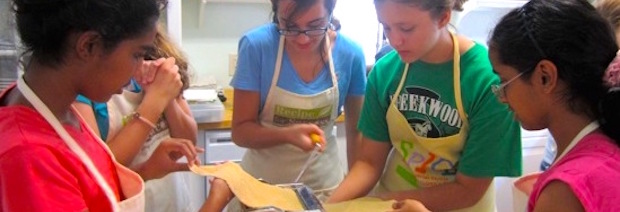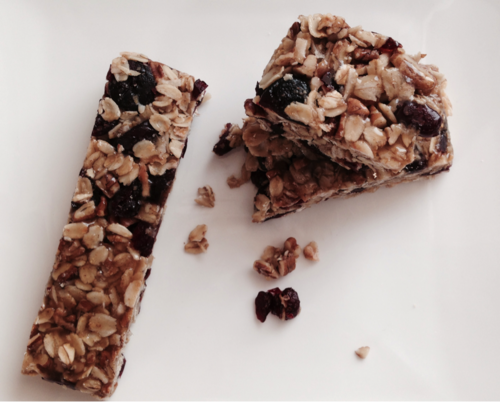 An Editorial for the Houston Chronicle, by Gracie Cavnar.
An Editorial for the Houston Chronicle, by Gracie Cavnar.
In 2004, I celebrated the news that Susan Combs, Texas Agricultural Commissioner at the time, had wrestled control of the school lunch program from those who supported the idea of soda machines in elementary schools and Sara Lee on the lunch line. I was proud that Texas, which was leading the nation in childhood obesity rates, was also leading the way on meaningful reform to help reverse the epidemic. Last month, I got a headache when I read that Sid Miller, our current Texas Agricultural Commissioner, is on a campaign to reverse those rules and will probably succeed, despite protests from health experts, teachers and parents.
It had been a heads-up from Susan about vending machines in schools that sparked my own fight to save the next generation from a lifetime of obesity. Now Mr. Miller was using time-tested political tactics to distract Texans from the real issues surrounding school food with his high-profile crusade to allow Moms to bring birthday cupcakes from home to little Johnny's class. The indignation of it all! Guvmint rules prohibiting dearly held family traditions of classroom birthday celebrations! The cupcake wars were a red herring, a non-issue. In fact birthday cupcakes have always enjoyed a waiver in both state and federal school nutrition rules. But let's not let the facts get in the way.
School lunch is a hot potato--or should I say French fry--and always has been. There is a whole lot of money involved. We spend over $10 billion annually on the National School Lunch program. That's big business. So, no wonder politicians like to ignore the Surgeon General's warnings.
Food in schools has always been controversial. Started in 1946 in response to the nutritional deficiencies of U.S. military recruits, the school lunch program soon became embroiled in serial struggles among food and drink companies, farmers, agribusiness, school administrators, and nutritionists. They fought over who could regulate what, where and when. It was all about the money. Remember the ketchup and pickle relish controversy in the early 80's? That was nuthin compared to efforts made by the soda industry to break into the lunch line. In 1983, acting on a suit brought by the National Soft Drink Association, a panel of judges ruled that the USDA could regulate drinks only in public-school cafeterias, and only at mealtimes. As long as soft drink and candy companies had the permission of local school boards and administrators, they could sell anything, any place at anytime. Vending machines began to multiply like bunnies in the hallways and gymnasiums of our schools.
It was bad enough that parents were already dealing with the cartoons, the toys and cross marketing that motivated the tiniest tots to demand sugary cereal and chicken nuggets. But now, even if they limited TV, parents could no longer shield their kids from junk food access. No matter what the home-rule, a five year old with money in his pocket could buy his own soda at school or have nothing but chips for lunch. And what a coup for the snack food giants! Snaring a cradle to grave customer while making millions.
At the same time, obesity rates skyrocketed: Between 1980 and 2000, rates doubled and obesity has now eclipsed smoking as the number one health hazard in America. Today, over half of all Americans are obese and 10% of us have Type II Diabetes. This year, 400,000 Americans will die from diseases linked to their obesity and one million of our feet will be amputated. Sadly, every year the obesity epidemic reaches further down the age charts. 23 million American kids are already obese. Now, its not unusual for a six year old to develop chronic diseases that we used to only see in their grandparents: Type 2 Diabetes, hypertension, heart disease, liver disease, kidney failure and even cancer.
Obesity is not just killing many of us; it's costing all of us--$270 billion in 2011 alone. That's not only in healthcare, but also lost time at work, disability payments and increased insurance premiums for everyone.
The map to turn this epidemic around has been in our hands since 2005, when the Robert Wood Johnson Foundation and Institute of Medicine published a sweeping manifesto. After four years of gathering reports from over 60 top health researchers and documenting obesity trends along with its financial and health impacts, their action plan laid out recommended interventions at every level of our society, from home, to neighborhood, to school, town, city, state and federal. They considered schools one of the most influential settings to encourage healthy behavior. The group, along with the American Public Health Association and the American Academy of Pediatrics called for an overhaul of school lunch guidelines along with elimination of all sugar-sweetened beverages, snacks and low nutrient food from vending machines and campus cafeterias.
By then, over 21% of elementary, 62% of middle and 85% of high schools had vending machines on campus and 83% of them offered a-la-carte foods on the lunch line from vendors like Taco Bell, Subway, Domino's and Pizza Hut. School districts across the country pushed back. They counted on the extra revenue from vending and food contracts--typically upwards of $125,000 a year per school, and so did the big soda and snack food companies. A raft of advertising ensued--$52 million annually directed at kids alone, to promote exercise as the best way to stay healthy, while celebrating American's freedom to eat what we want. Go ahead; you deserve a break today!
Research indicates that what we eat and the way we eat it is at the root cause of obesity, so the school cafeteria is a great place to start changing habits. American taxpayers foot the bill for 21.5 million kids to eat free meals at school every day. For 80% of these children--16 million who are food insecure, it's often their only meal. I'm wondering why we would agree to line the pockets of the junk food industry on the taxpayer's dime to feed our most vulnerable kids high-calorie, nutrient-poor food that contributes to their chance of becoming obese and practically ensures that we will continue to pay for a lifetime of their chronic diseases? One of the most effective disruptors to the poverty cycle is good health. Wouldn't the taxpayer dollar be better spent to guarantee healthy school lunches?
Shame on Mr. Miller for signaling to Texas schools that it's OK to go back to the old, profitable unhealthy ways; but shame on us for letting him get away with it! Cupcake anyone?
 Recipe for Success reminds you to eat your vegetables
Recipe for Success reminds you to eat your vegetables















